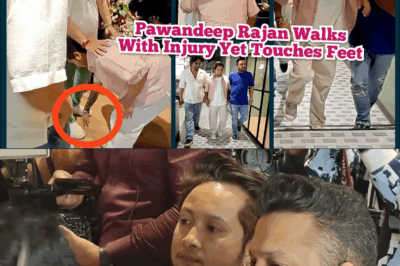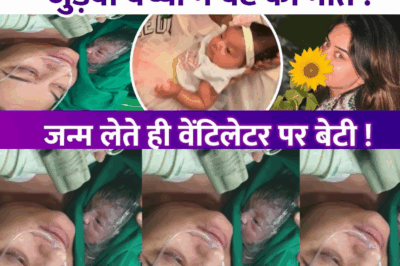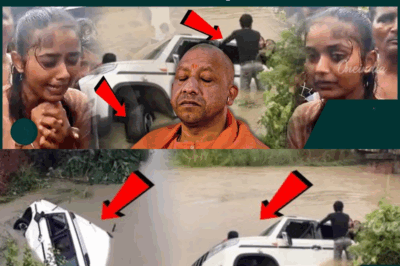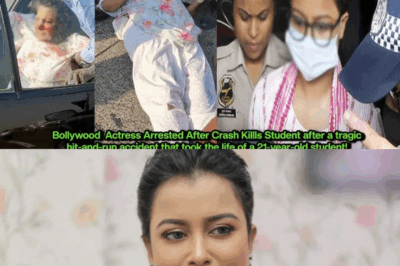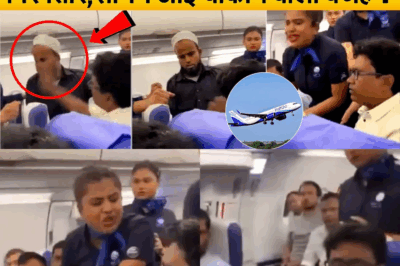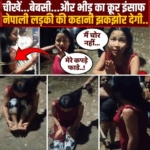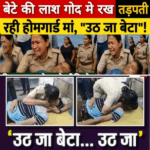Chaos at Hathras: Stampede Leaves Over 100 Dead, Nation Demands Answers
Hathras, Uttar Pradesh, became the epicenter of tragedy and outrage as a religious gathering meant to bring solace and blessings ended in one of India’s deadliest stampedes. The morning of July 2, 2024, began with hope as tens of thousands of devotees traveled from across the region to attend a “satsang” led by Baba Sakar Vishwa Hari in Phulrai village. Families woke before dawn, packed into buses, tempos, and tractors, and poured onto the dusty field, hearts brimming with faith. What happened just a few hours later would transform that faith into panic, and joy into unimaginable loss. By noon, the crowds had swelled far beyond what the makeshift arrangements could safely handle. An estimated 150,000 people jostled for space beneath the open sky, the pressing heat and lack of crowd control weighing on the exhausted volunteers and police. The event’s organizers—unprepared for such an overwhelming turnout—failed to install enough barricades and designated exits, and did not anticipate how quickly the situation could spiral out of control. As the religious discourse ended in the afternoon, the crowd surged forward for a closer glimpse and blessings from the spiritual leader. In that chaotic moment, desperation overtook discipline. Eyewitnesses recall the first signs of trouble—a sudden, forceful push at the front, a frightened scream as someone stumbled. The domino effect was immediate and devastating. With people behind pushing forward and those in front unable to move, the dense mass became a trap. Within seconds, dozens fell to the ground, others tripping over them while still more were pressed by the unrelenting crush of bodies from behind. Panic spread like wildfire. Some tried to climb over the living wall of people in search of air, others clawed for any sign of exit. Men and women became separated from children; friends and family lost each other in a sea of bodies and fear. “I was holding my mother’s hand,” sobbed a teenager at the district hospital, “but in a split-second she was gone. The crowd swallowed her.” For many, the struggle to escape was a fight for life itself. Cries for help filled the air, mingling with the sound of prayers and heartbreaking pleas as more people went down, unable to break free from the crowd or lift themselves up.
By the time local police and emergency services arrived, the horror of what had transpired became painfully clear. The ground was littered with slippers, sarees, and the scattered belongings of the faithful who would not return home that day. Injured survivors were carried to ambulances, some barely conscious, their faces caked in dust and blood. Hospitals in Hathras and neighboring Etah and Aligarh districts were overwhelmed as casualty after casualty arrived, many of them women and children. Doctors and nurses worked frantically to save those they could, but the death toll kept rising. Within hours, the official tally climbed past 120, and by nightfall, the count of injured topped 200. Ward corridors echoed with the grief of families searching for missing loved ones. Some broke down as they identified the bodies of mothers, sisters, or daughters who just that morning had left home on a spiritual pilgrimage. The confusion at the hospitals was matched only by the fury and helplessness in the villages. Survivors accused police and event organizers of gross negligence. “There were no proper exits, no crowd barriers, nobody to control the rush!” wailed one local, her hand bandaged and her voice hoarse from crying. In village after village, funerals began before the sun rose again. Community leaders organized mass cremations as religious chants sought to ease the pain, but the scent of burning pyres could not mask the anger or the sense of injustice.
Authorities swung swiftly into damage control mode. Hathras District Magistrate Ashish Kumar and Chief Minister Yogi Adityanath visited the hospitals, expressing condolences and promising both a Special Investigation Team probe and monetary compensation for the victims’ families. Police registered FIRs against unidentified organizers, while district officials suspended junior officers for lapses and failure to enforce crowd protocols. Chief Minister Adityanath declared, “Those responsible for this disaster will face the full force of the law. No one involved in this criminal negligence shall be spared.” Promises of Rs 2 lakh compensation for each deceased and Rs 50,000 for the injured were announced, but the people of Hathras demanded more than money; they wanted accountability, and, above all, assurance that such a tragedy would never be repeated.
Across India, the disaster in Hathras prompted a wave of shock and mourning. Social media was flooded with chilling videos—witnesses recorded the chaos and agony with trembling hands, their cries and grief making hashtags like #HathrasStampede and #NeverAgain trend nationwide. Editorials raged against the regularity of deadly stampedes at Indian religious events, citing a dismal history of broken promises and ignored regulations. Experts pointed to the familiar failures: unauthorized gatherings, absent police planning, myths of “divine protection” trumping hard logistics, and a profit-over-safety culture among organizers. “Why do we let faith become fatal every year?” asked one anchor in a televised debate, as politicians and spiritual gurus traded blame.
Even as the focus shifted to official inquiries and damage control, the devastation at the grassroots could not be ignored. Relatives of the dead gathered at the now-deserted field, retrieving lost slippers, prayer shawls, and half-crushed bottles—miserable relics of a hope-filled journey that ended in mourning. Local NGOs worked round the clock distributing food, water, and moral support to shaken survivors and newly orphaned children. Others tried to provide grief counseling, but trauma ran deep. “My son wakes up screaming at night—he thinks the crowd is coming for him again,” a mother wept at a relief camp. For many, the pilgrimage had become a lifelong nightmare.
The investigation soon revealed that organizers had applied for permission for a crowd a fraction of the actual turnout. Police had deployed fewer than 80 officers for what became a 150,000-strong gathering. Barricades were symbolic and emergency medical arrangements almost nonexistent. There were not enough entry and exit points for a crowd of even half that size. The blame game intensified as event managers, police, and district administration pointed fingers at one another. Meanwhile, families waited for answers that would bring no real solace.
As days passed, Phulrai village and the greater Hathras region were left in a state of suspended grief. Shopkeepers stopped playing devotional music in memory of the lost. Every tea stall conversation circled back to the question: “How many more must be lost to negligence before India cares about crowd safety?” Appeals from prominent religious leaders and celebrities for better organization and stricter laws poured in, but rural voices remained pessimistic. One elder voiced a widespread fear: “Memory is short. Until the next disaster, nothing will change.”
Yet for the families of those who perished, the devastation is permanent. Faith has become inseparable from loss, prayer inseparable from the memory of panicked screams. Even as the committees and commissions begin their slow paperwork, the survivors and the dead bear silent witness to a tragedy that was all too preventable. The field at Phulrai stands empty now, a place where dreams of blessings turned into a graveyard of broken bodies and broken trust. As the nation mourns and demands answers, one question rises above the rest: When will safety matter as much as faith, and how many more must die before devotion does not carry the risk of death?
News
Manipur on Edge: Jiribam Burns as Fresh Violence Sparks New Wave of Fear
Manipur on Edge: Jiribam Burns as Fresh Violence Sparks New Wave of Fear Introduction: Violence Returns to a Fractured State…
From Sorrow to Stardom: The Untold Miracle of Mahi Vij and Jay Bhanushali’s Daughter Tara
From Sorrow to Stardom: The Untold Miracle of Mahi Vij and Jay Bhanushali’s Daughter Tara In the ever-glamorous world of…
Gonda Canal Tragedy: 11 Dead, Survivor’s Ordeal Shocks the Nation
Gonda Canal Tragedy: 11 Dead, Survivor’s Ordeal Shocks the Nation Gonda, Uttar Pradesh: What started as a pilgrimage for a…
Bollywood Actress Kashyap Under Fire: Tragic Hit-And-Run Claims Student’s Life in Dakhingaon
Bollywood Actress Kashyap Under Fire: Tragic Hit-And-Run Claims Student’s Life in Dakhingaon Guwahati, India – In a harrowing incident that…
Shocking Incident on IndiGo Mumbai-Kolkata Flight: Passenger Slapped During Panic Attack, Goes Missing; Police and Airline Respond
Shocking Incident on IndiGo Mumbai-Kolkata Flight: Passenger Slapped During Panic Attack, Goes Missing; Police and Airline Respond Viral Video Sparks…
‘Drishyam’ Actress Ishita Dutta Opens Up About Health Scare for Herself and Newborn Son Vaayu
‘Drishyam’ Actress Ishita Dutta Opens Up About Health Scare for Herself and Newborn Son Vaayu Actress Shares Candid Updates with…
End of content
No more pages to load

